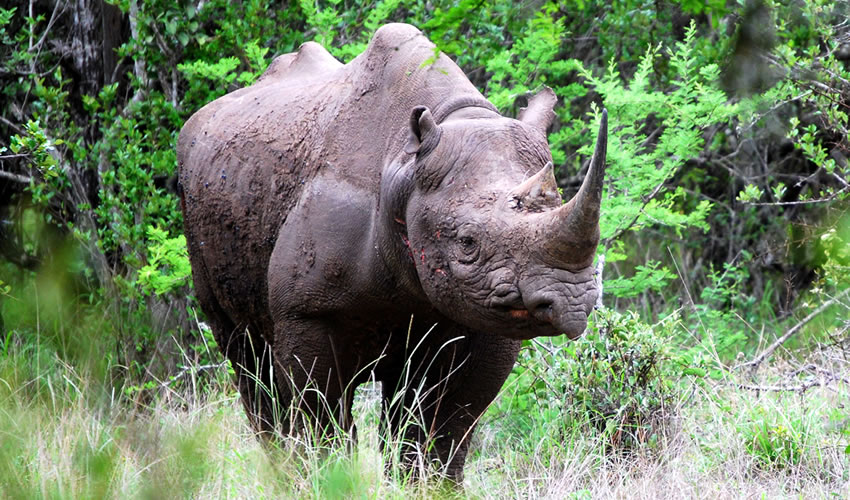
There are now ten Eastern black rhinos being housed at Chester Zoo after the birth earlier this month of a male calf called Gabe. Eastern black rhinos are considered to be critically endangered in the wild by the International Union for the Conservation of Nature (IUCN) so the new arrival at Chester Zoo is a welcome addition. Act For Wildlife scientists and animal care staff at the zoo have all made a contribution to the successful rhino breeding programme.
Hormone levels monitored
The organisation has spent a number of years monitoring the hormone levels of female rhinos who live at the zoo in order to determine when the best time would be to introduce them to a potential mate. The hormone levels were monitored by analysing rhino dung. Zoo keepers carefully collected dung samples from all of the female rhinos and handed them over to the zoo’s lab for testing.
Better insights
The monitoring of hormones gives the zoo a better insight into what is actually going on inside the rhinos. It has the potential to inform keepers whether the animal happens to be a seasonal breeder and whether it has reached puberty. Hormone information lets zoo keepers know whether the rhino is cycling on a regular basis and when the best time would be to introduce a male to female. It also lets vets determine whether there is a pregnancy and estimate when a birth will take place if there is one.
Breeding has been successful
Chester Zoo has been particularly successful at breeding several critically endangered black rhinos and plays an important role in the international breeding programme. Over the last few years there has been an increase in the birth rates of the European rhino population which is fantastic news. This is a direct consequence of research that is being undertaken at Chester Zoo which is being financed by Act For Wildlife. The University of Liverpool and University of Manchester also participated in the research effort.





